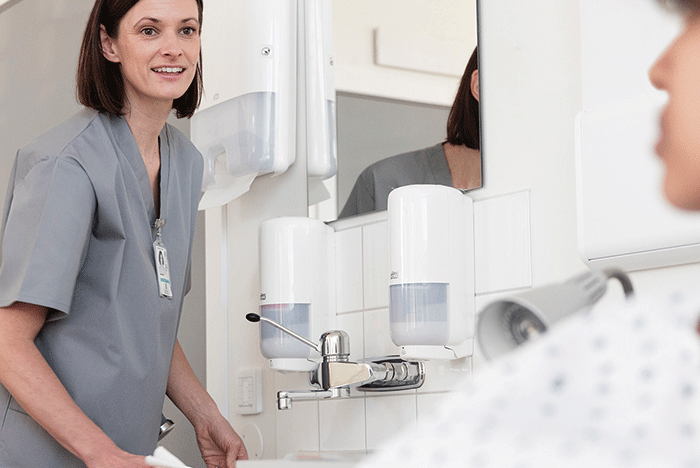Environmental Services
Responding to COVID-19 threats
Three low-cost ways health care organizations can help decrease infectious spread
|
In response to the hygiene needs of health care facilities during the coronavirus pandemic, Tork developed a “Safe at Work: COVID-19 Healthcare Toolkit” to help improve hand-hygiene and surface-cleaning compliance and aid in the effort to stop the spread of the novel coronavirus. Environmental services (EVS) teams can leverage the toolkit to strengthen their hygiene plan and set teams up for success. Areas of focus include:
- Hand hygiene. Amid COVID-19, it’s more important than ever for health care facilities to promote educational resources that will continue to educate, train and reinforce proper hand-hygiene practices for health care personnel and EVS teams. As noted in the sidebar on developing a hygiene plan of action, EVS teams can incorporate relevant learning and development opportunities into their overall plan to foster communication and education among EVS staff and other health care departments in critical areas of safety and hygiene.
- Surface cleaning. As with hand-hygiene procedures, surface cleaning should be routine for EVS staff. High-touch surfaces, such as floors, chairs, bedside tables and door handles, are ripe for contamination. EVS teams should be properly equipped and educated on surface cleaning protocols to help stop the spread of COVID-19 across these surfaces. EVS employees should be educated on the transmission of COVID-19 on high-touch surfaces and promote best practices, such as using appropriate cleaning solutions and wearing PPE if possible, to protect themselves and others. The Centers for Disease Control and Prevention’s “Environmental Checklist for Monitoring Terminal Cleaning” is another resource health care EVS staff can use to ensure surfaces are properly serviced and sanitized.
- Dispenser placement. Optimal dispenser placement ensures EVS staff are able to maintain safe practices across critical, patient and general areas. In fact, studies show that optimizing dispenser placement can increase usage by more than 50%. If a facility only increases the number of dispensers, it has a smaller impact on usage than keeping the same number of dispensers in more prominently visible locations. With this in mind, EVS professionals should consider the key areas for dispenser placement throughout the facility, including entrances, patient rooms and nurses stations.
As the threat of COVID-19 persists, preventing infection requires collaboration across departments.



